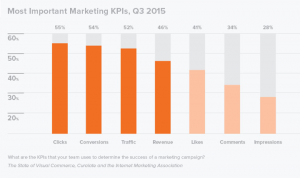Our AI habit is making us less environmentally friendly, Google admits
Brandon Vigliarolo, July 25, 2023
Our AI habit is making us less environmentally friendly, Google admits
Google’s plans to go green are faltering – and its all AI’s fault, the company claims.
Amid a fall in renewable energy usage and increased water consumption, Google SVP of learning and sustainability Ben Gomes said the Chocolate Factory maintains its “bold goal” to achieve net zero emissions, but the disappointing data is due to the AI that Google has made the centerpiece of its operations.
“Predicting the future growth of energy use and emissions from AI compute in our datacenters is difficult,” Gomes said in Google’s 2023 Environmental Report, adding that Google remains “focused on developing new ways to make AI computing more efficient while leveraging the opportunities that AI presents to have a positive environmental impact.”
Regardless of the talk, Google’s consumption of carbon-free energy decreased a bit, from 66 to 64 percent, between 2021 and 2022. More startling is the company’s scope 2 greenhouse gas emissions, which are those coming from the purchase of power, heat and the like, which jumped 37 percent between 2021 and 2022.
“Achieving net-zero emissions and 24/7 CFE by 2030 are extremely ambitious goals — what we call moonshots,” a Google spokesperson told us.
“We also know that our path to net-zero emissions won’t be easy or linear; it may require us to navigate significant uncertainty and deploy new systems and technologies across our business.”
Water consumption (water that is used but not returned to its source) may be the most shocking statistic of all to come out of the report, especially in light of Google’s recently announced datacenter plans. The company consumed 22 percent more water in 2022 than it did in 2021.
Google said that it launched a water replenishment program in 2021, and this report marks the first time Google has returned data from that initiative. According to Google, it wants to replenish 120 percent of the freshwater it consumes by 2030. As of 2022, it was restoring just 6 percent of its consumed water, per the report.
“We’ve had a strong first year of implementation of our water replenishment strategy, and once our 38 contracted projects are fully implemented, their average annual benefit is expected to increase by nearly five times to 1.3 billion gallons per year.” a Google spokesperson told The Register.
Some 5.6 billion gallons of water were consumed by the business in 2022, the equivalent of what would be spent to irrigate 37 golf courses in the southwestern US over the course of a year.
“We evaluate and take into account local water stress when deciding where to locate our facilities, how to design them, and how to operate them – from water systems in our offices to cooling systems in our data centers,” Google said. The company noted that 82 percent of its freshwater withdrawals came from regions with low water stress, while Google is “actively exploring new partnerships and opportunities” to improve its water usage in water-stressed regions.
Google describes itself as an “AI-first company” in the report, which goes a long way to explaining why its energy and water consumption is jumping so drastically, especially given the AI breakthroughs of the past year.
ChatGPT, for example, consumes around 500ml of water to cool its hardware for a single 20-50 question/answer conversation. Bard, with its ability to reach out to the web and perform searches, may consume even more, although Google points out that its latest Tensor Processing Units are the most efficient yet.
Google claims to take water stress into account when planning new facilities and recently broke ground on an air-cooled $1 billion datacenter project in Arizona, home to a decade-long drought while still being a datacenter hot spot.
It says that it’s using AI for sustainability projects, such as eco-friendly maps routing, which it said has prevented 1.2 million metric tons of carbon emissions since the option launched in late 2021. Nest smart thermostats have helped avoid an estimated 36 million tons of carbon emissions over the past decade as well, Google said.
The combined scope 1, 2 and 3 carbon emissions from Google were over 11 million tons in 2021, and more than 10 million tons in 2022. Google considers its total operational emissions to be zero, however, but for that to be the case it relies on purchases of carbon credits and restricting scope 3 (indirect, from sources not owned by Google) emissions.
For its net-zero calculation, Google considers only business travel and employee commutes in scope 3, ignoring capital goods, upstream transportation/distribution and “other categories,” the latter of which is its largest scope 3 source.
(4)




